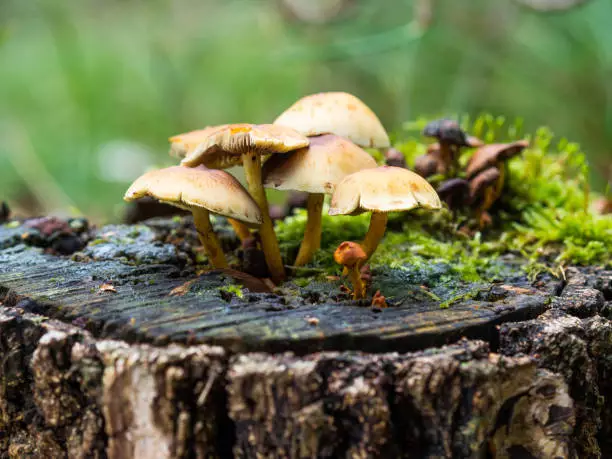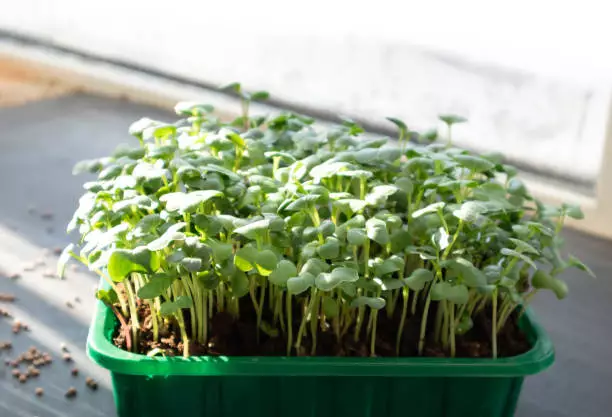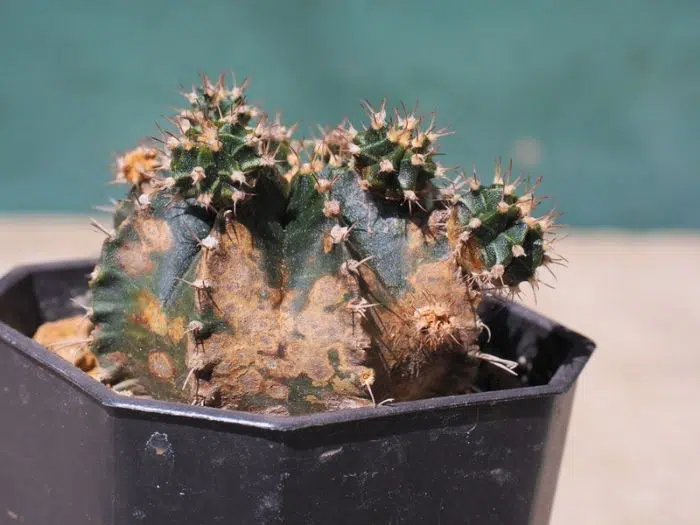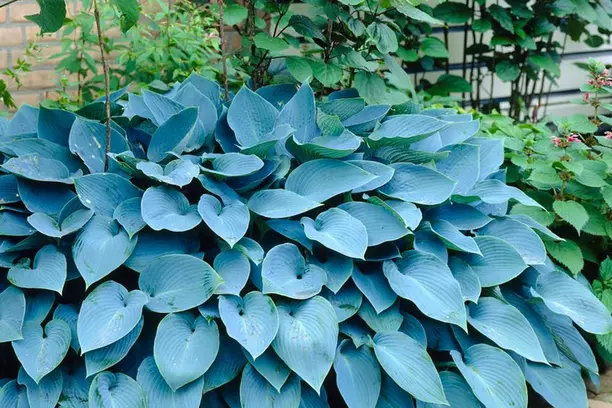Palm trees have shallow roots compared to other plants. Despite the small and weak roots, they can handle periods of drought and winter fairly well. Overwatering your palm isn’t an uncommon problem. Most people do and sometimes fail to realize the signs of an overwatered palm tree.
Each type of palm tree has different water requirements. To prevent overwatering the plant, find out its watering requirements and stick to that plan.
Signs of overwatering in palms trees
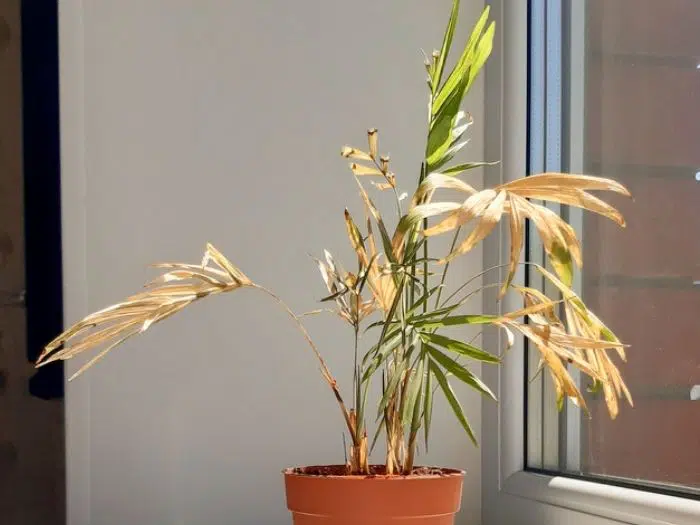
Overwatering palm trees can result in irreversible damage. It can lead to some palm tree diseases or even kill the palms if not saved on time. In general, your palm tree will start to look unhealthy if you give it too much water.
Here are the signs of an overwatered palm tree:
- Palms trees start to lose their leaves.
- Wilted leaves and fronds
- Leaf discoloration – yellow or brown palm tree leaves that start falling off before drying
- Younger foliage and newly emerging leaves turning brown
- Nutrient deficiencies caused by excess water, e.g. chlorosis
- Root rot which is usually difficult to detect and treat
RELATED: HOW TO TREAT BROWN TIPS ON ARECA PALM TREE LEAVES
If you’ve overwatered your palm tree, try saving the plant as soon as possible. Leaving it to stay in soggy soil can cause fungal root rot that’ll kill the plant and make it impossible to revive it.
How to save an overwatered palm
For indoor palm trees, you can easily tell you’ve overwatered your palm when you turn over your pot. The bottom of the pot will be soggy due to excess water draining slowly at the base. Palm trees can’t survive when sitting in dense, soggy, or airless soil. You should always check if the soil is airy, porous, chunky.
Here’s how to save an overwatered palm tree:
1. Treat root rot
To treat root rot disease, remove the plant from the soil, then wash the roots using running water. Try being gentle when doing this. Use sharp scissors to cut off the rotten roots and to give the roots higher chances of growing back. Lastly, dispose of the soil the palm was in, and thoroughly wash the pot with a bleaching solution or hydrogen peroxide solution.
2. Repot the palm tree
Prune off any mushy roots on your palm before repotting it. Leave the remaining stems to dry out for a day before replanting in new soil with a new potting mix that’s well-draining. Add sand and a pair of pea gravel on the soil to act as much.
RELATED: HOW LONG DOES IT LAST FOR POTTING SOIL TO BECOME BAD AND EXPIRE
Use Physan 20 solution to treat the remaining roots and stems before replanting.
3. Add sand to your potting mix
Palm trees don’t require much water to grow. They thrive well in soil that’s made of 80% sand. Adding more sand could be the trick you need.
4. Place the plant in a shaded area
Moving the plant in a shady spot ensures the plant dries out a bit since the palm will use less water when in a shaded area. You can move it to its normal lightning position after it grows healthy again.
You can always add a significant amount of perlite to the potting soil to improve soil aeration and increase water drainage. Also, instead of using tap water for irrigation, use rain water, melted snow, or distilled water when watering your palm. You can also use watering globes to keep your potting soil moist all the time.
The following are some great palm tree watering tips to consider:
- Add sand in the soil to improve drainage
- Use a probe or a meter to check the moisture before deciding to water your plant. Alternatively, you can utilize a shovel to dig where the moist root end.
- Plant your palms that have the same water requirements, for instance, succulents.
- Don’t use deep watering every time.
- Water when hot, and keep it dry when cold.
How much water does my palm need?
The amount of water your palm needs depends on the container you are putting it in. If it’s a 25 gallons container, you would require 25 gallons of water. If it’s 10 gallons, then 10 gallons of water is what it needs.
The type of palm type and the type of soil also matters.
When watering, check the soil to ensure that it is moist and adjust the amount of water when needed. The soil needs to be wet and not soggy. Deep watering is a great way to achieve this. It ensures that the water reaches the root system of the palm tree and retains the moisture.
RELATED: HOW DEEP DO PALM TREE ROOTS GROW
Instead of watering your plant for only a few minutes, do it in bits using the same amount of water. For example, water the palm tree over 1-2 hours, taking 30-minute breaks in between the waterings. Ensure you’re slow-dripping the water over the soil on the leaves only.
Since palm trees grow more actively in the summer, they require more water during the high-heat season. Nevertheless, watering once in a while during the winter season is enough.
Watering your indoor palm tree
The best part about palm trees is their ability to add color and vibrance to any space. Most palms need just enough water to grow perfectly. Thus, knowing how to water your indoor palm would ensure you keep it in your space for longer.
Majesty palm
It would be best if you planted your majesty palm in plastic containers with holes for drainage. Underneath the container, place a plastic liner or tray to drain any residual water if a leak occurs indoors.
Pro tip: To avoid overwatering, remove your plastic container with drainage holes and place it on your sink. Soak the soil gently until the whole pot has been saturated. Leave it for around 15 minutes to allow the water to drain from the pot before placing it back on its tray or basket.
After 1 day, check the tray if there is any sitting water. If there’s any water, leave it to drain longer the next time.
You can test the soil by dipping your finger in the soil for at least one inch. When still moist, leave it for a few days before watering again. Only water the plant when the top 1-2 inches of the soil is dry. The aim is to keep the soil moist (and not soggy).
Sago palms
Sago palms prefer well-draining soils. Watering the plant once a week is enough. Allow the soil to dry out before watering again to prevent overwatering. When you water, always ensure the soil is thoroughly and evenly damped.
Areca palm
When overwatered, areca palms roots will start rotting, making them unable to absorb water and nutrients from the soil. You’ll notice brown leaves on your areca palm (starting from the tips). If not fixed, overwatering will lead to the death of your areca palm.
Plant your areca palms in a pot with plenty of drainage holes. The pot should be large enough to prevent it from tipping over. However, it shouldn’t be too large for it to take too long to dry.
Ponytail palm
A ponytail palm can go several weeks before needing water. Improper drainage and overwatering make its blades turn yellow and drop. It may sometimes lead to root rot.
To avoid overwatering, use fast-draining soil. Use a pot that has a hole at the bottom to enable the excess water to drain off. If possible, plant it in a clay pot, as the porous material will absorb some of the water.
Can palm trees be overwatered safely?
Palm trees are highly prone to root rot. It is NOT safe to overwater these plants especially if potted. Always allow the soil to dry out between waterings. An overwatered palm will develop undesired symptoms such as yellowing leaves. If not treated on time, the plant will die and may be beyond saving.
Since palms can do well in both summer and winter seasons, you need to know how to water them during these specific seasons. You also need to water them at specific times in a day.
Once you get a new palm tree, you will need to water it daily for the first two weeks. After that, you can reduce the watering times to one to three times a week, depending on the season.
You should water early in the mornings to ensure the soil remains moist even during the hottest hours. Watering it in late afternoons ensures the plants remain healthy even for the following day.
Watering your palm is necessary for it to thrive. However, overwatering can lead to the death of your palm.
Know your palm, understand its watering needs, and you will be good to go.
